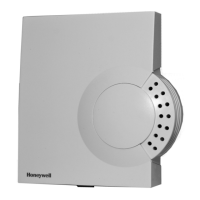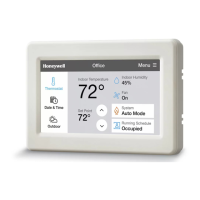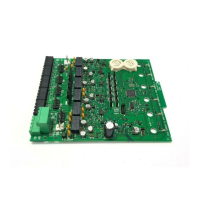USER GUIDE FALCON
111 EN2Z-0962GE51 R0715
Class object. In addition, each recipient has a FromTime and ToTime, which specify
a window, on those days of the week, during which the recipient is viable. If an event
that uses a notification class object occurs and the day is one of the days of the
week that is valid for a given recipient and the time is within the window specified for
the recipient, then the recipient shall be sent a notification. Recipients may be
further qualified, as applicable, by any combination of the three event transitions TO
OFF-NORMAL, TO FAULT, or TO NORMAL.
The recipient also defines the device to receive the notification and a process within
the device. Processes are identified by numeric handles that are only meaningful to
the recipient device. The administration of these handles is a local matter. The
recipient device may be specified by either its unique Device Object Identifier or its
BACnet Address. In the latter case, a specific node address, a multicast address, or
a broadcast address may be used. The recipient further specifies whether the
notification shall be sent using a confirmed or unconfirmed event notification.
How the notification class assignment is handled in CARE: please see the following
graphic.
NOTIFICATION CLASSES AND EVENT HANDLING
HTML
INTERFACE
CARE
CLIENT
NOTIFICATION CLASS
RECIPIENT A
TRANSITIONS
DATAPOINT
Urgent
High
Low
Analog Input
TRANSITION EVENT
To-Normal
To-OffNormal
To-Fault
ALARMING (NOTIFICATION)
Low
Urgent
High
TIMESTAMP
Notification = High
To-Normal
To-OffNormal
To-Fault
RECIPIENT B
TRANSITIONS
To-Normal
To-OffNormal
To-Fault
Notification = High
To-Normal
To-Fault
Fig. 27. Notification classes and event handling
Alarm and Event Priority Classification Alarms and events traversing the BACnet network need prioritization to assure that
important information reaches its destination and is acted upon quickly. To assure
alarm prioritization at the network level, the network priority as defined in the
network layer protocol control is set automatically according to the alarm and event
priority settings. The following table shows the alarm and event priorities
classifications including semantic meaning.
Life Safety
00 – 31
Life Safety
Message Notifications related to an
immediate threat to life, safety or health
such as fire detection or armed robbery
Property Safety
32 – 63 Life Safety message
Notifications related as an immediate
threat to property such as forced entry
Supervisory 64 – 95 Critical Equipment Message
Notifications related to improper operation,

